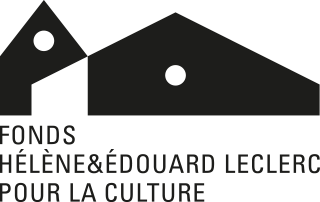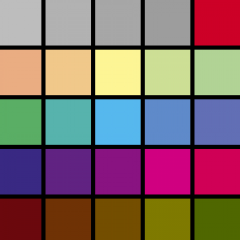- Publié le 04/10/2024
- Par Équipe Médiation
[ZOOM SUR] l'exposition « Henri Cartier-Bresson »
- Focus sur la section 13 de l'exposition « Henri Cartier-Bresson » : En Allemagne
Mur de Berlin‑Ouest, Allemagne, 1962 © Henri Cartier-Bresson - © Magnum Photos
En Allemagne
En 70 ans de carrière, les images de Cartier‑Bresson n’ont jamais perdu leur qualité de composition. Dans cette photographie réalisée en 1962, tout est à sa place : les lignes de perspective se croisent harmonieusement, les rythmes gris de la chaussée, des façades et des murs s’accordent parfaitement, les trois personnages juchés sur une borne sont disposés selon les proportions du nombre d’or. L’image a été prise à Berlin, peu après la construction du mur qui sépare l’est de l’ouest. Elle montre, depuis la partie occidentale de la ville, trois jeunes hommes en costumes modernes qui observent ce qui se passe de l’autre côté du rideau de fer. Elle permet surtout de comprendre que, derrière l’impeccable géométrie, les images de Cartier‑Bresson possèdent toujours un fort contenu documentaire. Pour lui, la photographie est « la reconnaissance simultanée, dans une fraction de seconde, d’une part de la signification d’un fait et de l’autre d’une organisation rigoureuse des formes perçues visuellement qui expriment ce fait ».
In Germany
Cartier‑Bresson’s images never lost their quality of composition throughout his career of 70 years. In this photograph taken in 1962, everything is in the right place: the perspective lines are equally proportioned, the grey patterns of the pavement, the façades of buildings and the walls are perfectly harmonised and the three figures perched on a bollard are set according to the proportions of the golden number. The image was taken in Berlin shortly after the construction of the wall separating the East from the West. From the Western part of the city, three young men in modern suits observe what is happening on the other side of the iron curtain. This photograph shows that behind the impeccable geometry, Cartier‑Bresson’s images always have a powerful documentary content. For him, photography was “the simultaneous recognition, in a fraction of a second, of the meaning of a fact on the one hand and a rigorous organisation of the forms visually perceived which express that fact on the other”.
Pour en savoir plus, rendez-vous dans l'exposition Henri Cartier-Bresson jusqu'au 05 janvier 2025, au Fonds Hélène & Édouard Leclerc.
Commissariat : Clément Chéroux.
S'ABONNER AUX NOUVELLES DU FONDS
FHEL
POUR LA CULTURE
AUX CAPUCINS
29800 LANDERNEAU (FRANCE)
02 29 62 47 78








